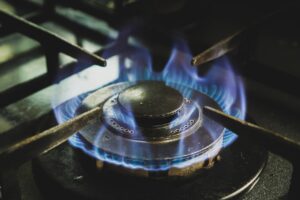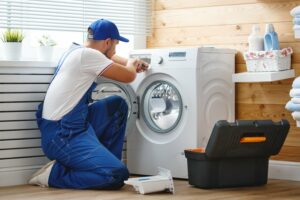Preventive maintenance refers to the regular and systematic inspection, cleaning, and servicing of equipment to prevent breakdowns and ensure optimal performance. When it comes to ovens, preventive maintenance is crucial to keep them running efficiently and extend their lifespan. By implementing a regular maintenance schedule, oven owners can save on costs, improve efficiency, and reduce the risk of breakdowns.
Key Takeaways
- Preventive maintenance is essential for ovens to ensure optimal performance and prevent breakdowns.
- Cleaning and inspection of oven components is crucial to identify and address potential issues.
- Lubricating moving parts can improve oven performance and extend its lifespan.
- Calibration of temperature controls and thermostats is necessary to maintain accurate temperature settings.
- Regular maintenance schedules and replacing worn-out parts can prevent costly breakdowns and ensure safe and efficient oven operation.
Importance of Preventive Maintenance for Ovens
a) Cost savings: One of the key benefits of preventive maintenance for ovens is cost savings. By regularly inspecting and servicing the oven, potential issues can be identified and addressed before they become major problems. This helps to avoid costly repairs or even the need for a complete replacement. Additionally, a well-maintained oven operates more efficiently, resulting in lower energy costs.
b) Improved efficiency: Regular maintenance ensures that all components of the oven are clean and in good working condition. This allows the oven to operate at its optimal efficiency, reducing energy consumption and improving cooking performance. An oven that is not properly maintained may take longer to reach desired temperatures or cook food unevenly, leading to wasted time and resources.
c) Increased lifespan of oven: Ovens are a significant investment, so it is important to maximize their lifespan. Regular preventive maintenance helps to identify and address any issues that could potentially shorten the lifespan of the oven. By keeping all components clean and well-maintained, the oven can continue to operate effectively for many years.
d) Reduced risk of breakdowns: Breakdowns can be costly and disruptive to any business that relies on ovens for their operations. Preventive maintenance helps to identify potential issues before they cause a breakdown. By addressing these issues early on, the risk of unexpected downtime is significantly reduced.
Cleaning and Inspection of Oven Components
a) Cleaning oven interior and exterior: Regular cleaning of the oven interior and exterior is essential to prevent the buildup of grease, dirt, and food debris. This not only helps to maintain hygiene standards but also ensures that the oven operates efficiently. Cleaning should be done using appropriate cleaning agents and techniques to avoid damage to the oven.
b) Inspecting door gaskets and hinges: The door gaskets and hinges are critical components of the oven that need to be inspected regularly. Damaged or worn-out gaskets can lead to heat loss and inefficient cooking. Hinges should be checked for proper alignment and lubricated if necessary.
c) Checking fan blades and motors: The fan blades and motors play a crucial role in circulating hot air within the oven. Regular inspection ensures that the fan blades are clean and free from obstructions, while the motors are in good working condition. Any issues with the fan blades or motors should be addressed promptly to prevent overheating or uneven cooking.
Lubricating Moving Parts for Optimal Performance
a) Lubricating door hinges and latches: Proper lubrication of door hinges and latches ensures smooth operation and prevents unnecessary wear and tear. This also helps to maintain a tight seal, preventing heat loss during cooking.
b) Lubricating fan motors and bearings: Fan motors and bearings should be lubricated regularly to reduce friction and ensure smooth operation. This helps to extend the lifespan of these components and prevent overheating.
c) Lubricating conveyor belts (if applicable): If the oven has a conveyor belt, it is important to lubricate it regularly to prevent it from sticking or becoming damaged. Proper lubrication ensures smooth movement of the belt, reducing the risk of breakdowns.
Calibration of Temperature Controls and Thermostats
a) Checking temperature accuracy: Temperature controls and thermostats should be regularly checked for accuracy. This can be done using a calibrated thermometer to compare the displayed temperature with the actual temperature inside the oven.
b) Calibrating temperature controls and thermostats: If any discrepancies are found during the temperature accuracy check, the temperature controls and thermostats should be calibrated. This ensures that the oven maintains the desired temperature consistently, resulting in accurate and reliable cooking.
c) Testing oven temperature uniformity: In addition to calibrating temperature controls and thermostats, it is important to test the oven’s temperature uniformity. This involves placing multiple thermometers throughout the oven and monitoring the temperature readings. If there are significant variations in temperature, adjustments may need to be made to ensure even cooking.
Checking Electrical Connections and Wiring
a) Inspecting electrical connections: Regular inspection of electrical connections is important to ensure that they are secure and free from corrosion. Loose or damaged connections can lead to electrical issues or even pose a safety hazard.
b) Checking wiring for damage: Wiring should be inspected for any signs of damage, such as fraying or exposed wires. Damaged wiring should be repaired or replaced immediately to prevent electrical malfunctions or accidents.
c) Testing electrical components (e.g. heating elements): Electrical components, such as heating elements, should be tested regularly to ensure they are functioning properly. This can be done using a multimeter to measure resistance and continuity.
Replacing Worn Out Parts to Prevent Breakdowns
a) Identifying worn out parts: During regular maintenance inspections, it is important to identify any worn out or damaged parts. This can include gaskets, heating elements, fan blades, motors, or any other components that show signs of wear and tear.
b) Replacing parts before they fail: Once worn out parts are identified, they should be replaced promptly to prevent breakdowns. Waiting until a part fails can result in costly repairs and downtime.
c) Using OEM parts for optimal performance: When replacing parts, it is recommended to use original equipment manufacturer (OEM) parts. OEM parts are specifically designed for the oven and ensure optimal performance and compatibility.
Proper Use and Care of Oven Accessories
a) Using accessories correctly: Oven accessories, such as baking trays or racks, should be used according to the manufacturer’s instructions. Overloading or using accessories that are not suitable for the oven can lead to inefficient cooking or damage to the oven.
b) Cleaning and maintaining accessories: Accessories should be cleaned regularly to remove any food debris or grease buildup. This helps to maintain hygiene standards and prevent contamination. Additionally, accessories should be inspected for any signs of damage and replaced if necessary.
c) Storing accessories properly: When not in use, oven accessories should be stored in a clean and dry environment. This helps to prevent damage and ensures that they are ready for use when needed.
Regular Maintenance Schedule for Ovens
a) Frequency of maintenance tasks: The frequency of maintenance tasks will depend on the type of oven, its usage, and the manufacturer’s recommendations. Some tasks, such as cleaning, may need to be done daily or weekly, while others, such as lubrication or calibration, may be done monthly or quarterly.
b) Creating a maintenance schedule: It is important to create a maintenance schedule that outlines all the necessary tasks and their frequency. This helps to ensure that no maintenance tasks are overlooked or forgotten.
c) Tracking maintenance tasks: Keeping a record of all maintenance tasks performed is essential for tracking the history of the oven’s maintenance. This can help identify any recurring issues or patterns that may require further attention.
Benefits of Preventive Maintenance for Ovens
a) Improved oven performance: Regular preventive maintenance ensures that the oven operates at its optimal performance, resulting in consistent and reliable cooking results.
b) Reduced downtime: By addressing potential issues before they cause a breakdown, preventive maintenance helps to minimize unexpected downtime. This is especially important for businesses that rely on ovens for their operations.
c) Increased safety: Regular maintenance helps to identify and address any safety hazards, such as loose electrical connections or damaged wiring. This helps to create a safe working environment for oven operators.
d) Cost savings: Preventive maintenance helps to avoid costly repairs or the need for a complete replacement. Additionally, a well-maintained oven operates more efficiently, resulting in lower energy costs.
e) Longer lifespan of oven: By keeping all components clean and well-maintained, the lifespan of the oven is extended. This maximizes the return on investment and reduces the need for frequent replacements.
In conclusion, preventive maintenance is essential for ovens to ensure optimal performance, reduce downtime, and extend their lifespan. By implementing a regular maintenance schedule that includes cleaning, inspection, lubrication, calibration, and replacement of worn-out parts, oven owners can save on costs, improve efficiency, and reduce the risk of breakdowns. Proper use and care of oven accessories, as well as regular tracking of maintenance tasks, further contribute to the overall effectiveness of preventive maintenance. It is highly recommended for oven owners to prioritize preventive maintenance to reap the numerous benefits it offers.
What Preventive Maintenance Tips Can Help Extend the Lifespan of Ovens?
To prevent costly advanced appliance repair mistakes to avoid, regular preventive maintenance for ovens is crucial. Simple tasks like cleaning the interior and exterior, checking and replacing faulty seals, and being mindful of what is placed inside can greatly extend the lifespan of ovens.
FAQs
What is preventive maintenance for ovens?
Preventive maintenance for ovens refers to the regular cleaning and inspection of ovens to prevent breakdowns and ensure optimal performance.
Why is preventive maintenance important for ovens?
Preventive maintenance is important for ovens because it helps to prevent breakdowns, prolong the lifespan of the oven, and ensure that it operates at optimal performance.
What are some preventive maintenance tips for ovens?
Some preventive maintenance tips for ovens include cleaning the oven regularly, inspecting the oven for signs of wear and tear, checking the oven’s temperature calibration, and replacing any worn or damaged parts.
How often should ovens be maintained?
Ovens should be maintained on a regular basis, with cleaning and inspection performed at least once a month. However, the frequency of maintenance may vary depending on the type of oven and how often it is used.
What are some signs that an oven needs maintenance?
Some signs that an oven needs maintenance include uneven cooking, strange noises, a burning smell, and a decrease in performance. If any of these signs are present, it is important to perform maintenance on the oven as soon as possible.
Can I perform preventive maintenance on my oven myself?
Yes, you can perform preventive maintenance on your oven yourself. However, it is important to follow the manufacturer’s instructions and safety guidelines when doing so. If you are unsure about how to perform maintenance on your oven, it is best to consult a professional.



